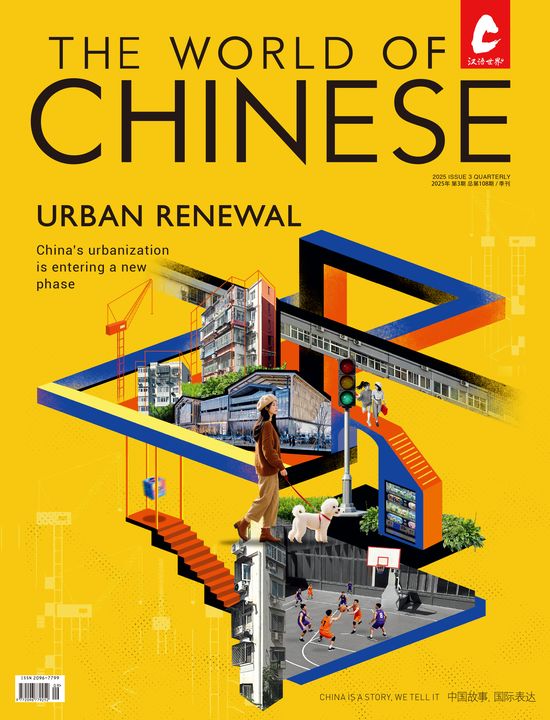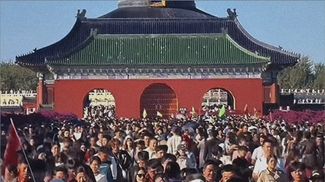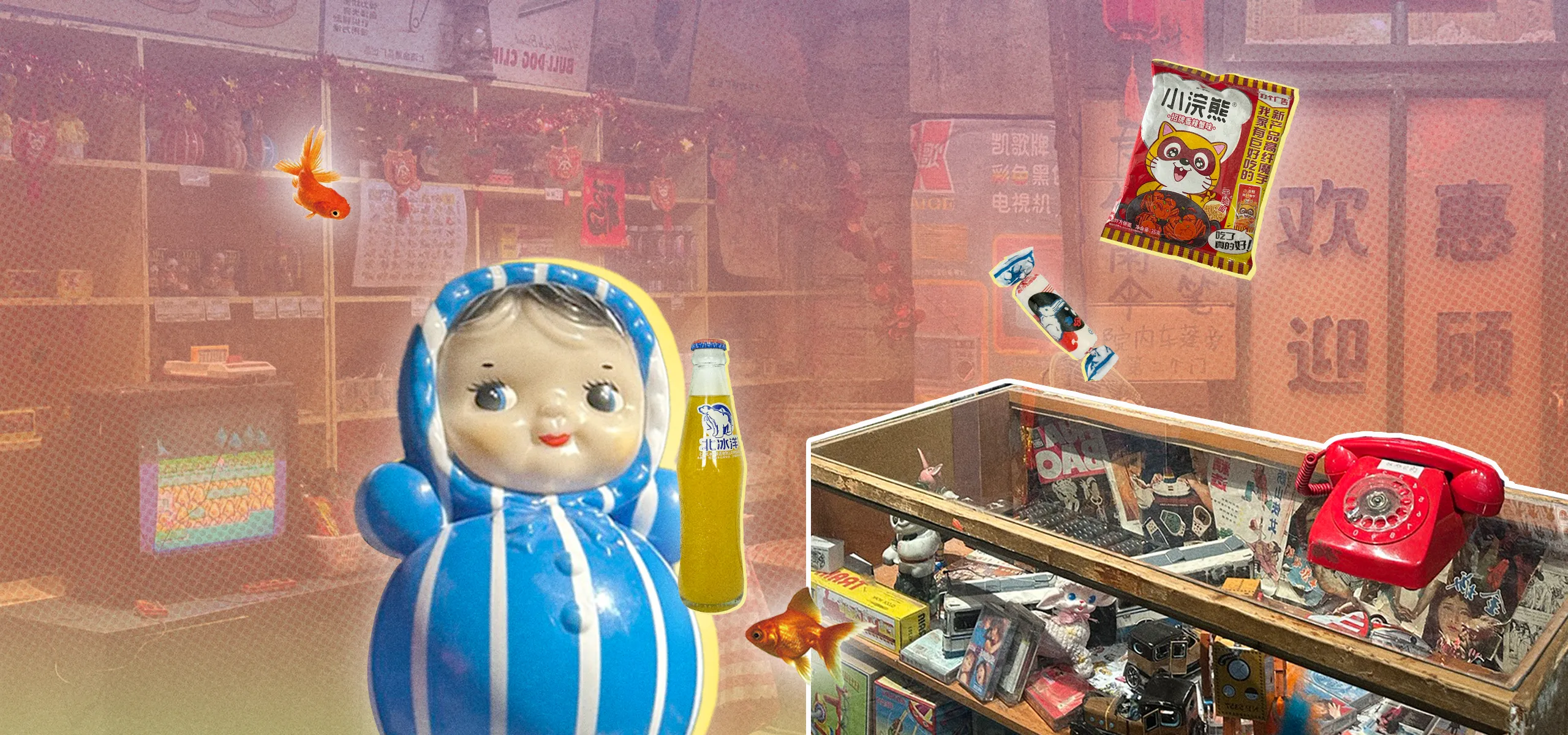Every generation has its own version of the “good old days”—and now, savvy merchants are cashing in on that nostalgia
Nostalgia isn’t just a feeling—it’s also a marketing goldmine. One study found that over half of US adults are more likely to make a purchase when a product evokes memories of the past. In China, as the impact of the global trade war sets in and the future grows increasingly uncertain, consumers are increasingly turning to the past for comfort. Even Gen Zs, many still in their teens, are embracing retro trends, fueling the rise of a new “Chinese nostalgia-core (中式梦核)” aesthetic on social media.
From vintage snacks to hit TV shows reviving bygone eras, brands are cashing in on a powerful emotional pull that resonates—and sells. In 2023 alone, sales of nostalgic childhood pastries increased by more than 70 percent. Movies and TV shows like Successor (2024) and Blossoms Shanghai (2024), set in the late 1990s and early 2000s, have also become big hits.
In this episode of the Middle Earth Podcast, hosted by Aladin Farré and produced by The World of Chinese magazine, we invited three guests from China’s culture industry to share how the nostalgia trend has played out in their respective fields.
Guests:
Chu Dandan is the former chief editor of The World of Chinese
Jiang Yaling is a consultant on Chinese consumer trends and a former journalist covering Chinese businesses and consumers
Haoyue is a film producer
Subscribe to the Middle Earth Podcast: Apple Podcasts | Spotify | Google Podcasts | Amazon Music | Overcast | RSS Feed
The following are excerpts from the transcript of the episode (edited for clarity):
1:39
Aladin: If the golden age for Western countries is the 1950s, for China, such a time of prosperity was in the 1990s and early 2000s. It was a time when everyone could pull up their sleeves and make a better life for themselves.
Chu Dandan: During my childhood in the 1990s, China was undergoing rapid urbanization. Migrants rushed to southern cities in search of new jobs and business opportunities. We called this movement xiahai, which literally means “to go into the sea.” The phrase symbolized bravery, opportunity, and the pursuit of hidden treasures.
My father was one of those early pioneers. He went to Shenzhen, a city less than ten years old at the time, as one of its first constructors. When we arrived, there was only one main road, but I watched the city grow from scratch like magic. They were laying three miles of road a day and finishing one floor of a building every three days. It left a deep impression on me.
Shenzhen also opened China’s first McDonald’s in 1990. My cousin took me there the following year. We spent 38 yuan—almost half of my mom’s monthly salary. The two of us shared a single hamburger because it was too expensive to get more. That was my first time trying what we used to call “Western food.”
That trip to visit my dad was filled with “firsts”: my first airplane ride, my first time using a brick phone called “dageda,” the first time I saw an electric rice cooker, and my first ride on an escalator. For a ten-year-old, it was truly a golden time. Even now, when I look back, I still feel a rush of excitement—I witnessed my father’s generation working tirelessly to build a massive city from scratch. So whenever I watch a movie set in the early years of China’s reform and opening-up, I don’t think of booming fortunes or a good life. I think of the spirit to fight and hard work.
8:31
Aladin: Yaling, you mentioned the show Blossoms Shanghai (2024), set in the 90s, actually brought you and your mother closer together, right?
Jiang Yaling: Yes, I watched every episode with my mother, and it became a meaningful bonding experience for us—two people from different generations. The show focuses on the export business during the early years of China’s opening-up, and whenever a deal was made on screen, my mom would share her own stories from that time. Her conclusion was always the same: “This is something your generation would never experience.”
In the 90s, she was an English teacher at a vocational school—a job assigned to her after graduating from a teacher’s college. She also ran a grocery store on the side, which was common for office workers who needed to earn extra income.
Another topic that often came up while we were watching Blossoms was the property market. Even at the dinner table, my dad would often express regret about not investing in Shanghai’s real estate. Coming from southern Jiangsu province, he always wished he had gone to Shanghai to buy more houses. That kind of thinking is very specific to their generation. For ours, we grew up knowing we probably couldn’t afford to buy a home in a major Chinese city. We don’t even see housing as an investment anymore—just a place to live. And even with that mindset, it’s still out of reach.
Blossoms perfectly encapsulated my mother’s feelings about the past: the fear of missing out and the desire to create a better life for herself and her family.
Chu: That period is said to be the golden age, but I don’t think it was golden for everyone. It was a time of turbulent transition—from a planned economy to an open market. In a big country like China, with both urban and rural populations, coastal and inland regions, and people from the north and the south, the experiences varied greatly.
I was lucky to grow up in a southern coastal city. I visited Shenzhen and witnessed the rapid development of a brand-new city. So in my memory, it truly was a golden time—those were good days. But some of my friends who lived in northeastern China had a very different experience. They struggled during that period.
13:10
Aladin: How are some brands using nostalgia to attract consumers now?
Jiang: There’s a brand I recently came across called Red Star Forward Milk and Bread. It originated in Beijing in 2022, but just last month, it opened its first store outside of Beijing—in Shanghai.
When you walk into the store, one of the first things you notice is the large red star, a symbol of communism. The branding is very patriotic, and it doesn’t just resonate with younger generations in China. It appeals not only to Millennials and Gen Zs influenced by the guochao trend but also to older generations, like my mom’s, who grew up during the Cultural Revolution.
These are people who remember a time when they had to eat at communal canteens, and I think they would feel nostalgic walking into the store, filling their own bottle of milk, choosing their own bread, and seeing propaganda posters around the space.
Chu: To me, the items these stores sell are quite different from real vintage pieces. The only thing I’ve ever bought from one is a white enamel cup printed with slogans like “Long Live Chairman Mao.” We used to drink from it, eat with it, even cook with it. The new ones just don’t feel the same.
16:27
Aladin: What are some of the movies that are trying to make a quick buck out of that period?
Haoyue: Jia Ling’s high-grossing film Hi, Mom (2021) marked a key starting point for this trend. In my opinion, the most important factor behind the rise of such films is the aging film audience. Before the pandemic, Chinese films were largely seen as targeting viewers between the ages of 15 and 25. But after Covid—and with the growing influence of short video platforms—movies began to feel too “serious” for younger audiences, and the core age range shifted upward by about 10 years. Now, the average moviegoer is between 25 and 35. As audiences age, film content needs to adapt—hence the surge in nostalgia-driven storytelling to keep them engaged.
Take the 2023 film Day Dreaming, for example. It’s about a mischievous third-grader who imagines using superpowers to solve all his life problems. The story is set in the 1990s, clearly playing the nostalgia card. It would still make sense set in 2024—and might even be cheaper to produce that way—but the filmmakers deliberately chose the 90s setting as a marketing hook. When I watched the film, I understood the nostalgic appeal, but after a while, it started to feel self-indulgent and a bit dull.
Chu: None of these period films show the real history. They highlight the beauty of that era but ignore the hardships. They make it seem like making money back then was easy, but it wasn’t.
Jiang: There are two distinct types of nostalgic films in China. One comes from directors like Jia Ling and Han Han, who draw from their own childhoods and focus on personal experiences. The other is more like Wong Kar-wai’s Blossoms, which feels much more deliberate in its messaging and presentation.
I don’t think directors like Jia or Han are intentionally tapping into nostalgia as a market strategy—they’re simply telling their own stories. But with TV series like Blossoms, it’s clear where the funding is coming from. The series was partially funded by the Shanghai government.
When we talk about nostalgia in the context of China, we can’t ignore how much of the cultural content we see, especially in film and television, is state-driven. It could come directly from a directive issued by the state, or production teams may have to meet certain requirements in their proposals to secure funding. That’s an important factor to consider when comparing these kinds of productions.
26:41
Aladin: Any last word regarding the nostalgia trend?
Haoyue: Making money off nostalgia is nothing new, but social media has accelerated its spread, allowing people to build communities around it.
Aladin: There are now plenty of short videos on Douyin that showcase life in the 1980s, and viewers can later buy nostalgic snacks and other related products directly from their Douyin stores. It’s an interesting mix of storytelling and e-commerce.
Chu: I think the trend will continue, since every generation has its own version of the “good old days.” For my parents, it’s the 40s and 60s; for my generation, the 90s; and for my son, probably the early 2000s.









